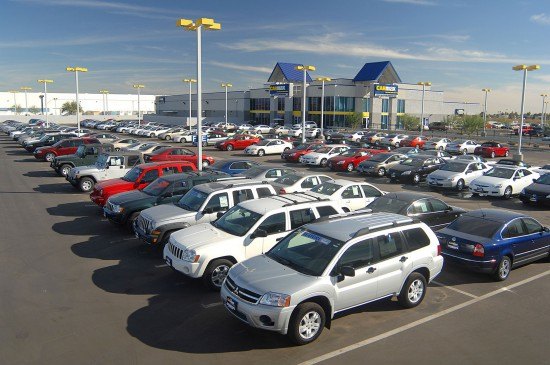Automakers, Dealers Prepare For 2016 Off-Lease Market Flood
Currently, around 2.13 million cars will come off-lease by the end of 2014, up from 1.7 million last year. By 2016 and beyond, however, over 3 million vehicles annually will turn up on many a CPO and used car lot, replacing a long drought with an El Niño-esque flooding of the U.S. used car market.
Automotive News reports the predicted rise in off-lease vehicles, though a boon for used-car dealers and their customers, will slam new-car buyers come trade-in time, as lower prices for used means lower value for those trading their vehicles for a new experience in the showroom floor. Rising interest rates and lease payments to make up for lower used pricing will also add pain to a new-car buyer’s wallet come 2016.
As for automakers and dealers, both parties are preparing the flood with various strategies being put together, such as Volkswagen’s partnership with DealerMatch — allowing VW dealers to buy and sell as many used vehicles as desired for a flat monthly fee, in lieu of the auction lot’s per-vehicle rate — and workshops designed to optimize CPO sales among dealers and sales representatives.
That said, some automakers and dealers may still find themselves overwhelmed by the coming tsunami due to leasing more vehicles than are sold. Edmunds.com senior analyst Jessica Caldwell says leases accounted for 26 percent of all new sales in the U.S. last year, while 28 percent of sales in Q1 2014 were leases. The increase in leases is aided by easy credit, rising residual values and record-low interest rates, and serves as a marketing tool to build customer loyalty through repeat visits as each lease agreement draws to a close.
The last time over 3 million vehicles came off-lease was in 2002, when 3.4 million returned to the used-car lot before slowly coasting downward to a low of 1.56 million a decade later.
Seattle-based writer, blogger, and photographer for many a publication. Born in Louisville. Raised in Kansas. Where I lay my head is home.
More by Cameron Aubernon
Latest Car Reviews
Read moreLatest Product Reviews
Read moreRecent Comments
- MaintenanceCosts Nobody here seems to acknowledge that there are multiple use cases for cars.Some people spend all their time driving all over the country and need every mile and minute of time savings. ICE cars are better for them right now.Some people only drive locally and fly when they travel. For them, there's probably a range number that works, and they don't really need more. For the uses for which we use our EV, that would be around 150 miles. The other thing about a low range requirement is it can make 120V charging viable. If you don't drive more than an average of about 40 miles/day, you can probably get enough electrons through a wall outlet. We spent over two years charging our Bolt only through 120V, while our house was getting rebuilt, and never had an issue.Those are extremes. There are all sorts of use cases in between, which probably represent the majority of drivers. For some users, what's needed is more range. But I think for most users, what's needed is better charging. Retrofit apartment garages like Tim's with 240V outlets at every spot. Install more L3 chargers in supermarket parking lots and alongside gas stations. Make chargers that work like Tesla Superchargers as ubiquitous as gas stations, and EV charging will not be an issue for most users.
- MaintenanceCosts I don't have an opinion on whether any one plant unionizing is the right answer, but the employees sure need to have the right to organize. Unions or the credible threat of unionization are the only thing, history has proven, that can keep employers honest. Without it, we've seen over and over, the employers have complete power over the workers and feel free to exploit the workers however they see fit. (And don't tell me "oh, the workers can just leave" - in an oligopolistic industry, working conditions quickly converge, and there's not another employer right around the corner.)
- Kjhkjlhkjhkljh kljhjkhjklhkjh [h3]Wake me up when it is a 1989 635Csi with a M88/3[/h3]
- BrandX "I can charge using the 240V outlets, sure, but it’s slow."No it's not. That's what all home chargers use - 240V.
- Jalop1991 does the odometer represent itself in an analog fashion? Will the numbers roll slowly and stop wherever, or do they just blink to the next number like any old boring modern car?































Comments
Join the conversation
Up to 2007 lease penetration in Canada was over 40%, lease returns never created a problem for anyone, they generated opportunities for many folks. In the ensuing years to now CPO programs have expanded by all manufacturers, to encourage dealers to retail more used vehicles. Making money twice on a vehicle by leasing it when new and retailing as a CPO makes a ton of sense for manufacturers and dealers. Especially with "slimmer" profits on new vehicles. With big data captive finance companies can calibrate the lease terms to smooth out the flow of lease returns, offer 24 months, then 27, then 36, then 39, then 48 month lease at various times of the year. Many manufacturer finance arms make provisions for "residual value" fluctuations. It makes for a good story, in reality its not a big deal, it moves new iron, and making money twice on a vehicle is part of the car business, be it a lease return or a trade in.
Ugh… great if you are getting a CPO without a trade. But if I'm understanding this correctly, even private sales will be harder due higher volume "deals"/inventory.